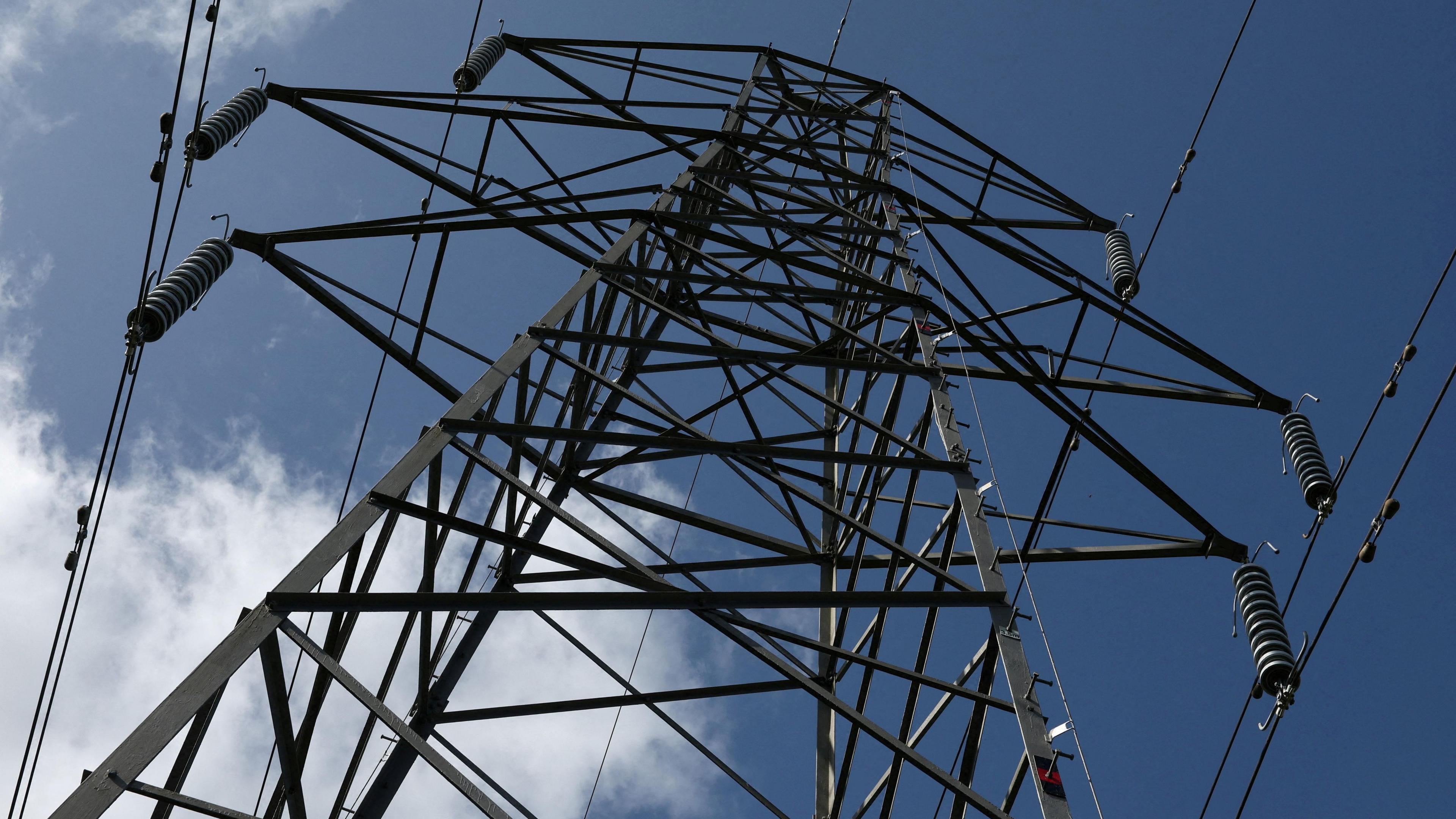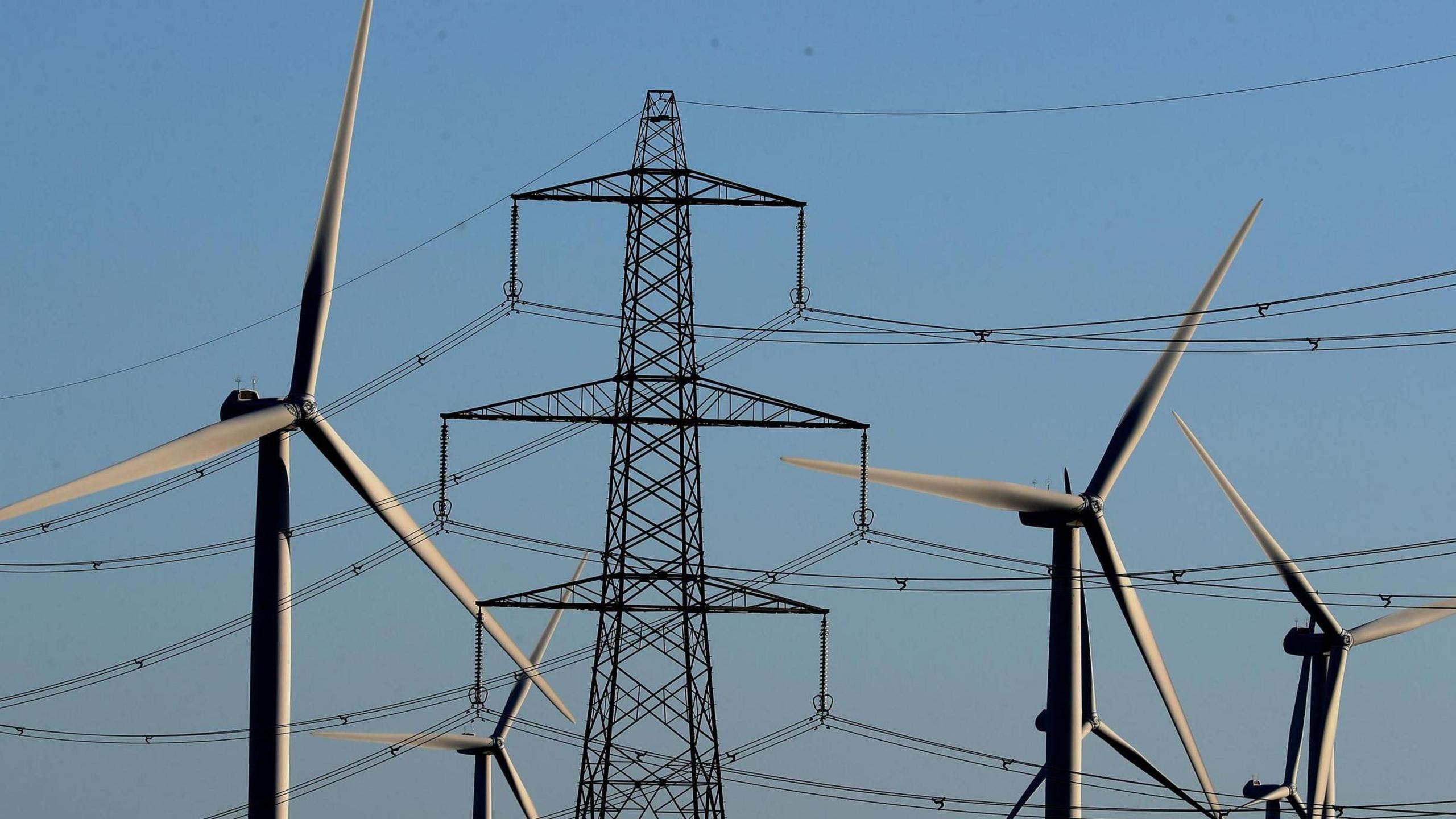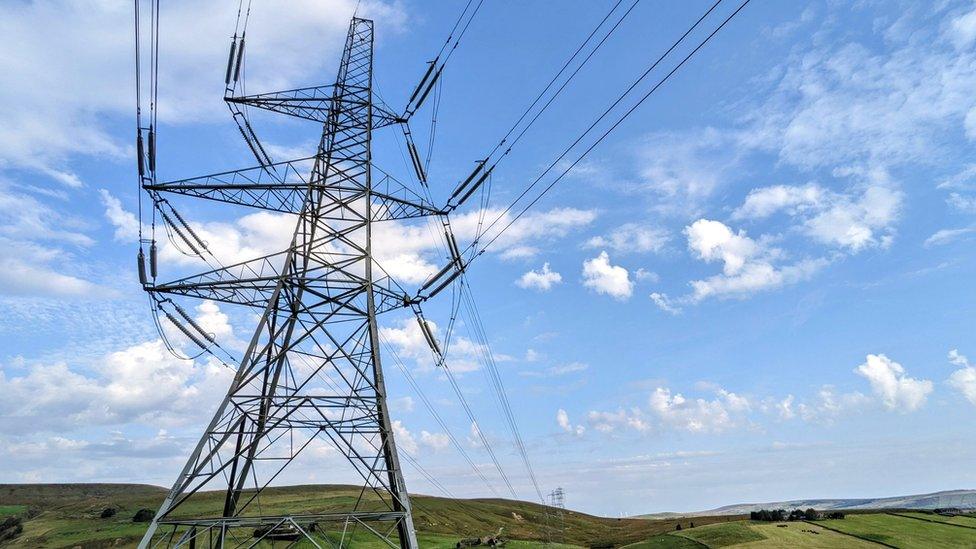Protesters to fight cross-border giant pylon plans

The pylons will be positioned every 200 metres for close to 50 miles
- Published
Protesters from across the Scottish Borders are fighting plans for giant pylons to be used to run wind farm energy into England.
Scottish Power Energy Networks (SPEN) wants to connect a planned electricity sub station near Lauder with awaiting overhead lines near Carlisle by using 60m (197ft) high steel towers.
Residents living in rural areas along the 50-mile route are concerned about the impact of the pylons and are calling for a complete rethink.
A SPEN spokesman said: "After much research, a preferred route has been identified that balances providing a cost efficient, robust and reliable electricity network, needed by everyone, with landscape, wildlife, visual and community considerations."

Edward Kello from Lauder is opposed to the pylon plans
The Cross Border Connection is one of several links being proposed to take renewable power between Scotland and England as part of a £58bn upgrade of the national grid.
While undersea connections, taking offshore energy to the south, have attracted little resistance, the overhead proposals through the Borders are meeting growing opposition.
Around a dozen small community protest groups have formed to fight against the proposed pylons.
Edward Kello, from Lauder, said: "I feel very strongly about the climate crisis and the need for renewable energy, but this is such a crude way of sending energy to the south."

Anthony James and Rosi Lister moved to their remote cottage near Hawick last year
Author and film-maker Rosi Lister has spent the past 18 months refurbishing a remote farmhouse near Hawick with her partner Anthony James.
If SPEN's plans are realised, their property will be a stone's throw from both the overhead line and a new Teviot electricity substation.
Mr James said: "They talk about community benefits but the only benefit I can see is to move back to England and take advantage of the electricity coming down the line."
Ms Lister added: "We just found out about this three weeks ago and we are absolutely horrified.
"We moved here because of the views, but there's pylons, the sub station and a wind farm on the way."

Douglas Walker believes the Ettrick Valley he lives in will be ruined by the pylons
As well as dissecting the Teviot Valley, the double 400kV overhead line will cut through the Tweed, Yarrow, Ettrick and Liddel valleys.
Douglas Walker, who lives in Ettrickbridge, is not convinced the steel towers are needed.
"This has nothing to do with Scotland meting its net zero targets, it's all about taking energy to England," he said.
"The Yarrow and Ettrick valleys are some of the most unspoilt areas in the country - we are all very concerned about these proposals."

The giant pylons will cross over Minch Moor between the Tweed and Yarrow valleys
The Cross Border Connection will link an overland spine taking onshore renewable energy from Aberdeenshire, Tayside, Perthshire and the central belt to reach power lines in Cumbria.
New sub stations are also planned for near Livingston, Lauder and Hawick to allow for wind farm energy to flow into the upgraded grid system.
SPEN claims that while renewable energy will go south, nuclear and hydro power will come north when it is needed.
A spokesperson said: “The Cross Border Connection is vital to strengthen the UK’s electricity system."

Protesters gathered in Caddonfoot Village Hall

Berwickshire, Roxburgh and Selkirk MP John Lamont
On Saturday, Berwickshire, Roxburgh and Berwickshire MP John Lamont chaired a meeting to allow protesters to raise their concerns with SPEN managers.
Mr Lamont believes other options should be considered.
"It's very clear that there are huge concerns about these giant pylons," he said.
"We are now demonstrating to SPEN and the Scottish government how strongly people in the Borders feel about these proposals.
"They need to investigate underground options rather than having these big pylons crossing some of the most historical and beautiful parts of the UK."
Following the concerns, SPEN has extended the current consultation period to the end of November.
Managers will take forward feedback and commission an Environment Impact Assessment next year ahead of publishing their fixed route proposals in 2026.
If planning approval is obtained from Scottish ministers, construction is expected to start on the Cross Borders Connection in 2029.
Related topics
- Published18 October 2024

- Published19 March 2024
